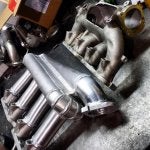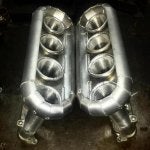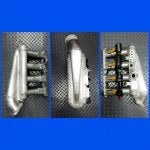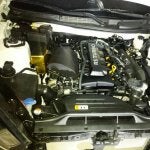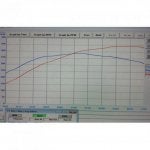I've seen ported manifolds in person (grimspeed) and there is nothing they do to correct the stock IM downfalls. In my opinion porting the head flange to try to port match it has a negative effect on port velocity.
All of the aftermarket single plenum IMs I've seen use much too large of a plenum and due to the space constraints use to short of a runner which moves the power curve too far to the right.
I think I have a few CFD analysis screenshots that show how these different designs actually work. It's very interesting stuff!
The stock IM is only good for stock tunes but quickly shows its weaknesses when the turbo is turned up. We actually saw close to 30whp gain if I remember correctly with just the addition of a bolt on dual plenum over the previous tune. I have the graphs and data if you guys want to see.
Also just because an intake manifold is made from sheet metal it doesn't mean its any less of a quality part. I personally handmade and form my IM from 0.125 sheet and tube extrusions that are custom formed in house. Given proper design you can achieve a very strong product that will not fail from fatigue and have less mass to heatsoak compared to a cast manifold.
Given what the genesis market will pay for an IM it doesn't make any sense to machine anything IE billet flanges and runners. Hell I even put way too much labor intake making mine, takes about 12-15 hours each depending on the batch size.
It's fun making Hyundais fast



